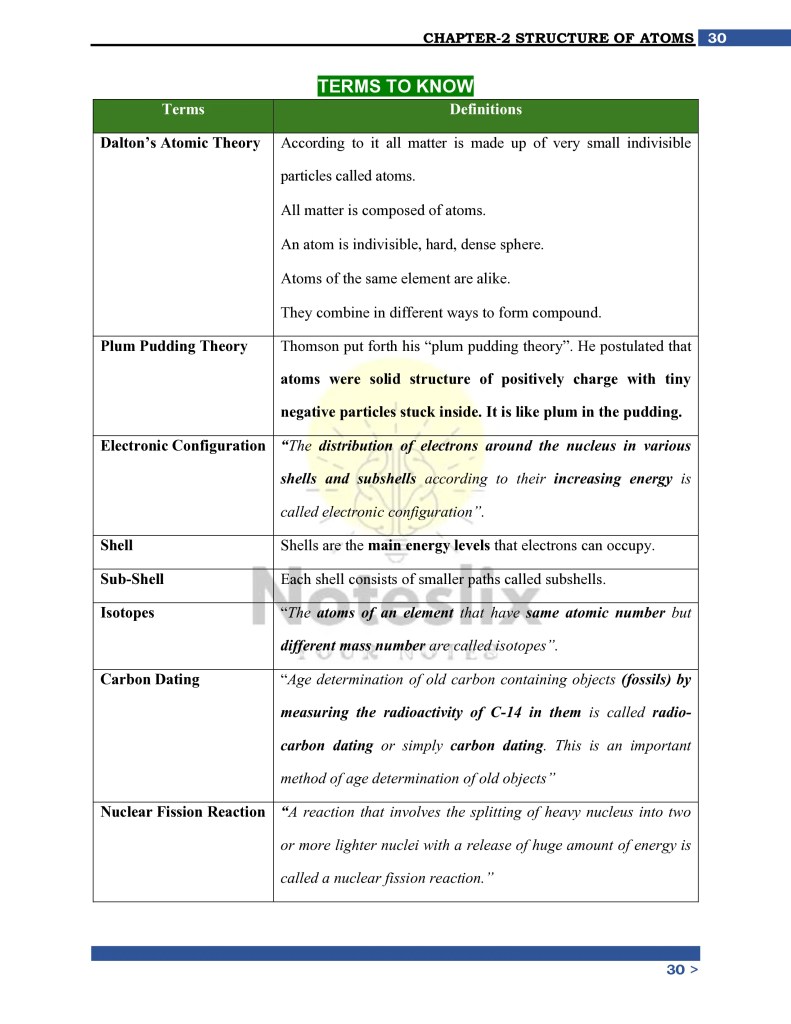Chemistry is a subject of exploration, curiosity, and conceptual understanding. Chapter 2, “Structure of Atoms,” covers the fascinating details about atomic theories, experiments, and subatomic particles.
In this article, we’ll cover additional conceptual questions from Chapter 2, emphasizing the topics presented on pages 29 to 32 of the notes. These questions will strengthen your conceptual clarity and prepare you for exams effectively.




What Is Covered in These Notes?
The notes of Chapter 2 include a variety of essential questions and their solutions. The highlights are:
- Atomic structure, subatomic particles, and isotopes.
- Angular momentum, nucleons, and Rutherford’s findings.
- Bohr’s theory, electronic configurations, and detailed concepts about shells and subshells.
These comprehensive questions provide a thorough understanding of the chapter and help in effective revision.
Additional Conceptual Questions
Here are some insightful conceptual questions to refine your understanding of Chapter 2:
-
What Are Nucleons?
Nucleons are fundamental particles, including protons and neutrons, located within the nucleus of an atom.
-
Why Are Neutrons Highly Penetrating?
Neutrons are highly penetrating because they carry no charge and do not interact with matter easily.
-
What Is Angular Momentum in Atomic Physics?
Angular momentum refers to the momentum of an electron moving in a circular orbit around the nucleus. It is quantized and calculated as:
mvr = nh / 2π
where n is the orbit number.
These additional questions not only clarify your doubts but also improve your analytical approach to problem-solving.
Tool for Success in Exams
These notes serve as a vital resource for success in exams:
- Well-Structured Content: The notes are concise yet detailed.
- Key Concept Coverage: From MCQs to in-depth long questions, they ensure you’re prepared for every type of exam question.
- Practice-Oriented: Practicing these questions sharpens your skills, boosts confidence, and enhances retention.
Colored Notes
One of the standout features of these notes is the use of colored highlights. Important concepts, formulas, and keywords are emphasized to ensure quick identification during revision. This visual aid helps students focus on the core areas, making learning more engaging and efficient.
Notes Are Free to Use
A remarkable advantage of these notes is their accessibility. Students can access these resources without any cost, making quality education available to everyone. Whether you’re preparing for an upcoming exam or revisiting critical topics, these notes are an excellent tool at no expense.
Notes Are Mistake-Free
The notes have been meticulously reviewed to ensure accuracy. From scientific terminologies to numerical problems, every piece of information has been cross-verified to eliminate errors. This guarantees that students can rely on these notes for precise and correct information.
Conclusion
In conclusion, the notes from Chapter 2 of Class 9th Chemistry are an invaluable resource for students. Covering conceptual questions, additional exercises, and MCQs, they provide a well-rounded preparation tool for exams.
With their structured format, visual aids, and free accessibility, these notes cater to all types of learners, ensuring conceptual clarity and exam success.
Other Class 9th Chemistry Important Conceptual Questions
- Class 9th Chemistry Chapter 1 Conceptual Questions
- Class 9th Chemistry Chapter 3 Conceptual Questions
- Class 9th Chemistry Chapter 4 Conceptual Questions
- Class 9th Chemistry Chapter 5 Conceptual Questions
- Class 9th Chemistry Chapter 6 Conceptual Questions
- Class 9th Chemistry Chapter 7 Conceptual Questions
- Class 9th Chemistry Chapter 8 Conceptual Questions

